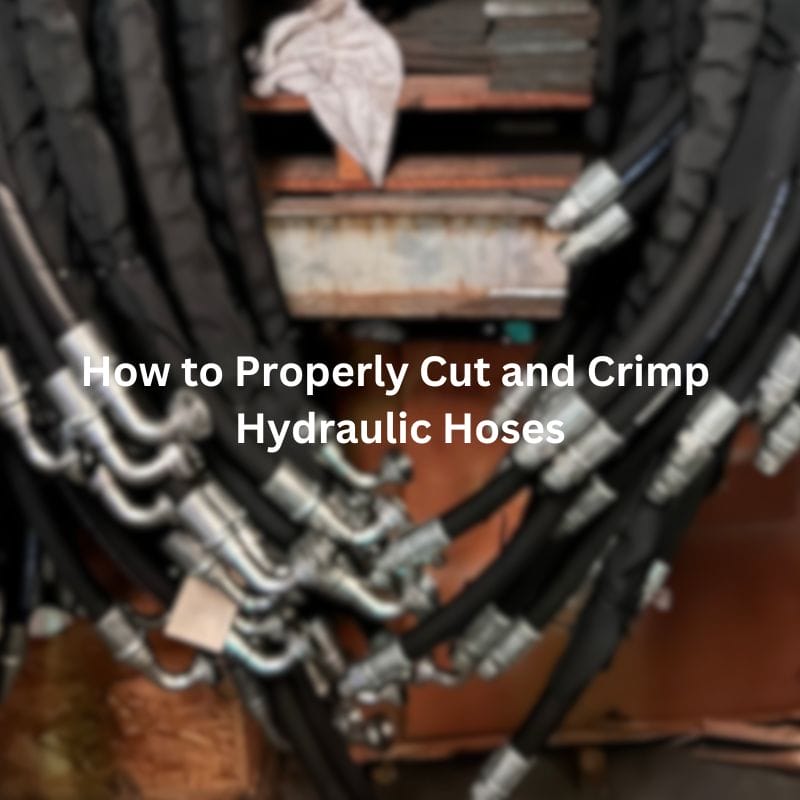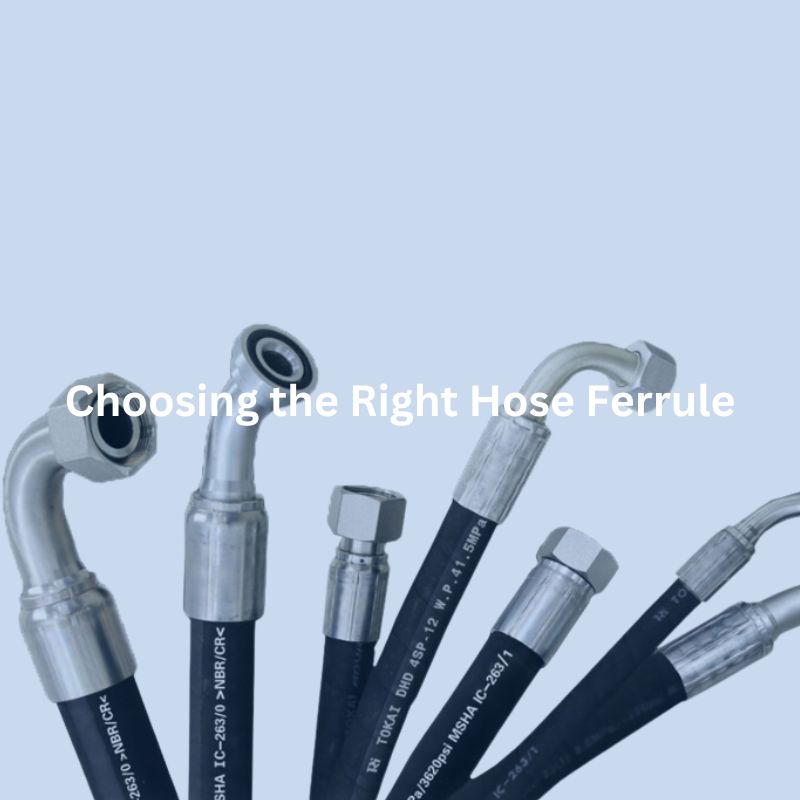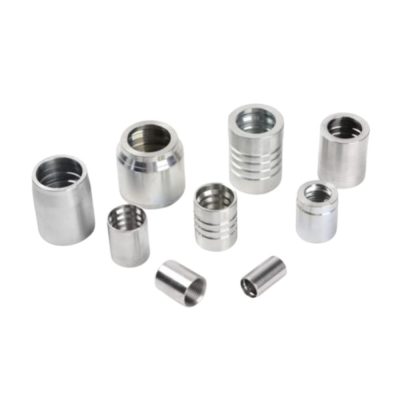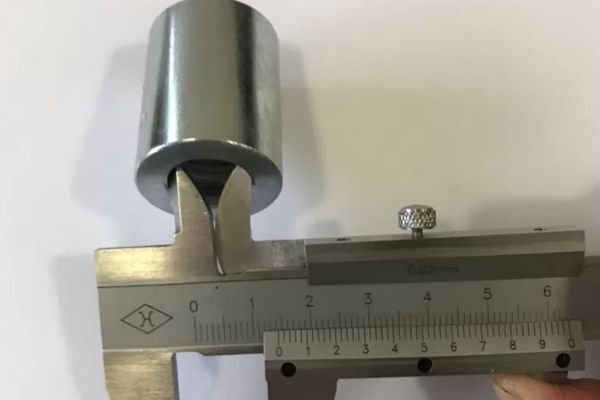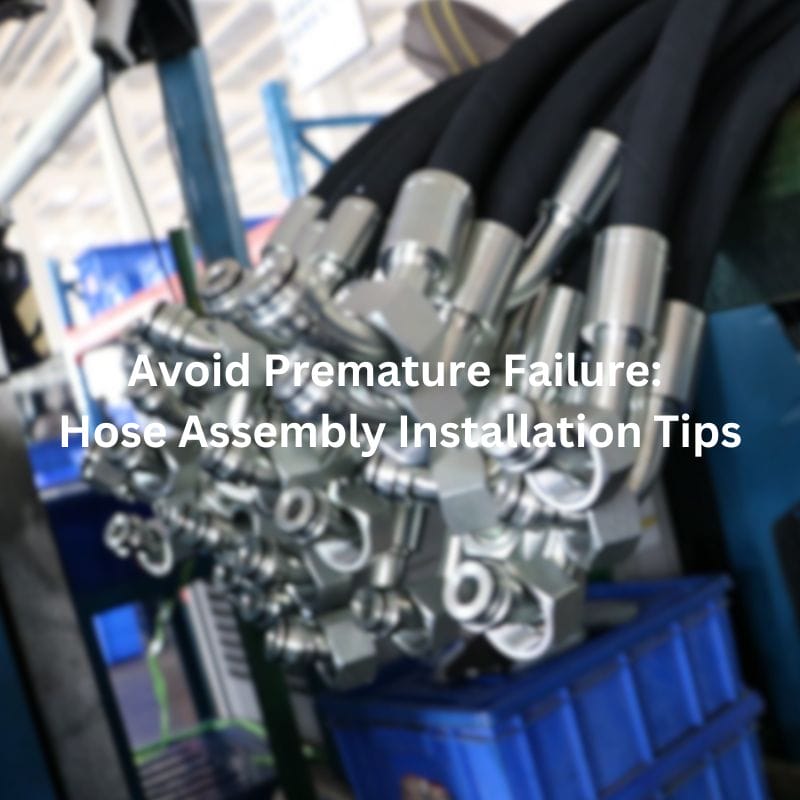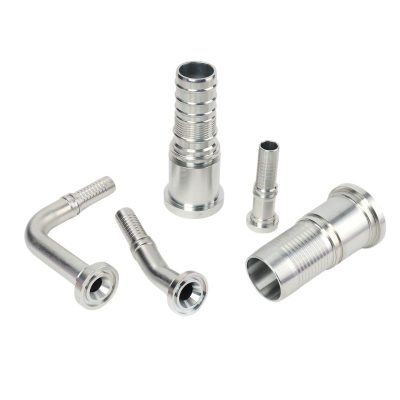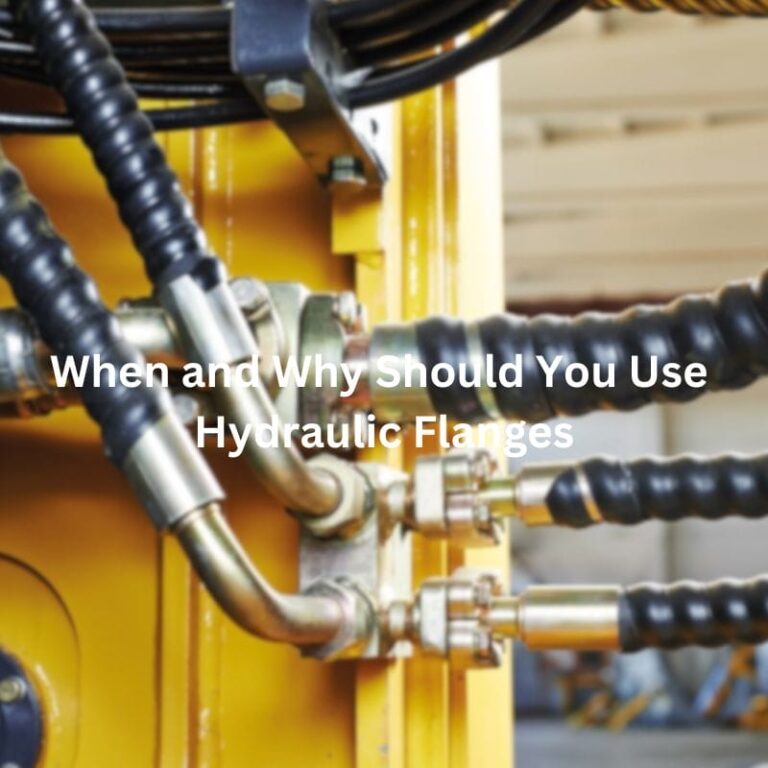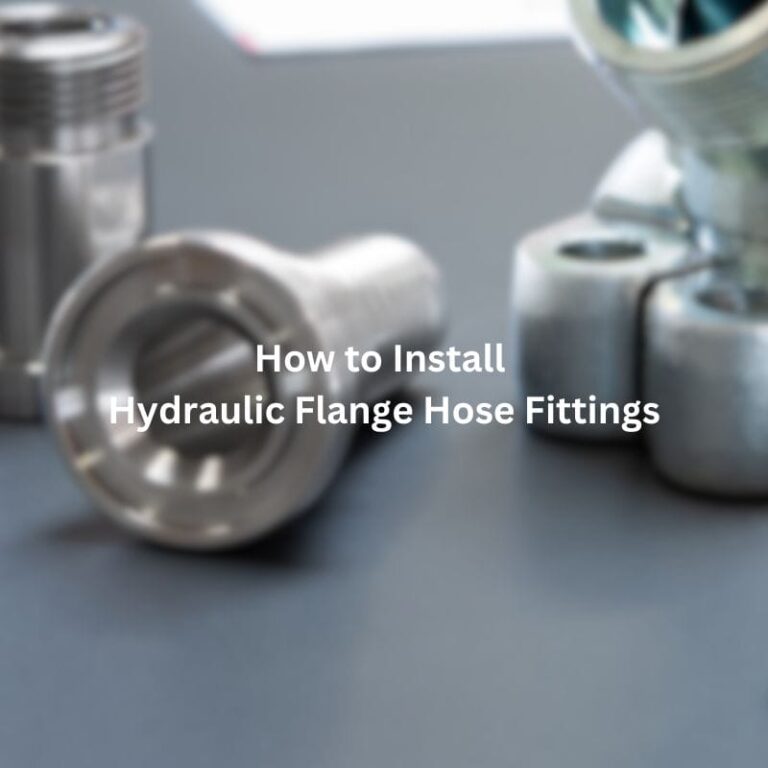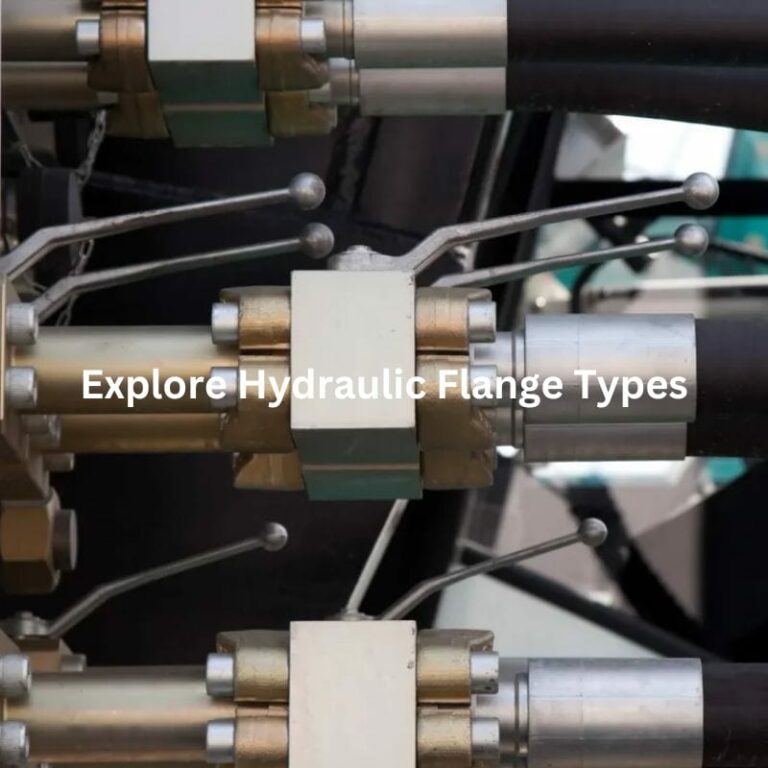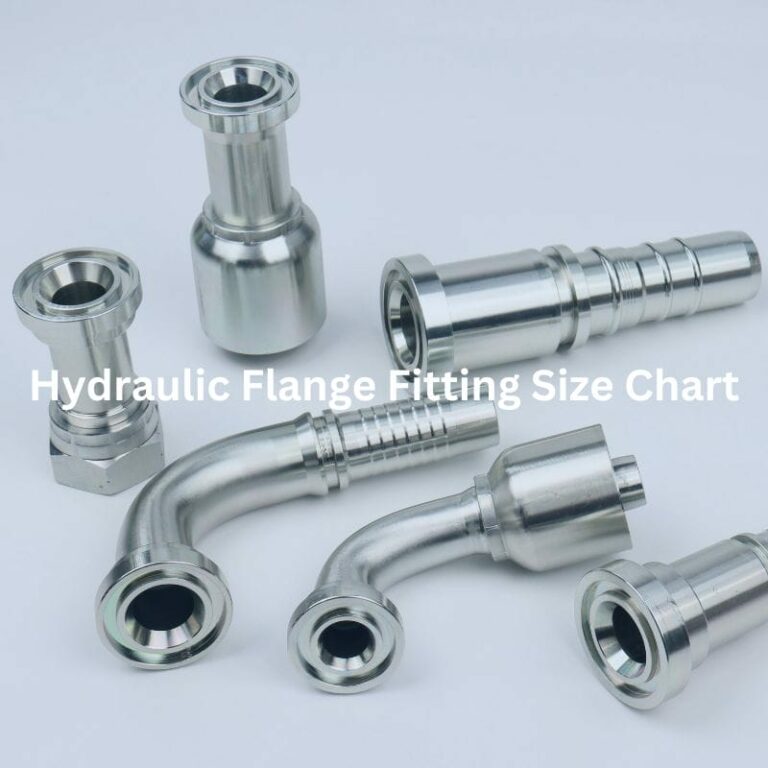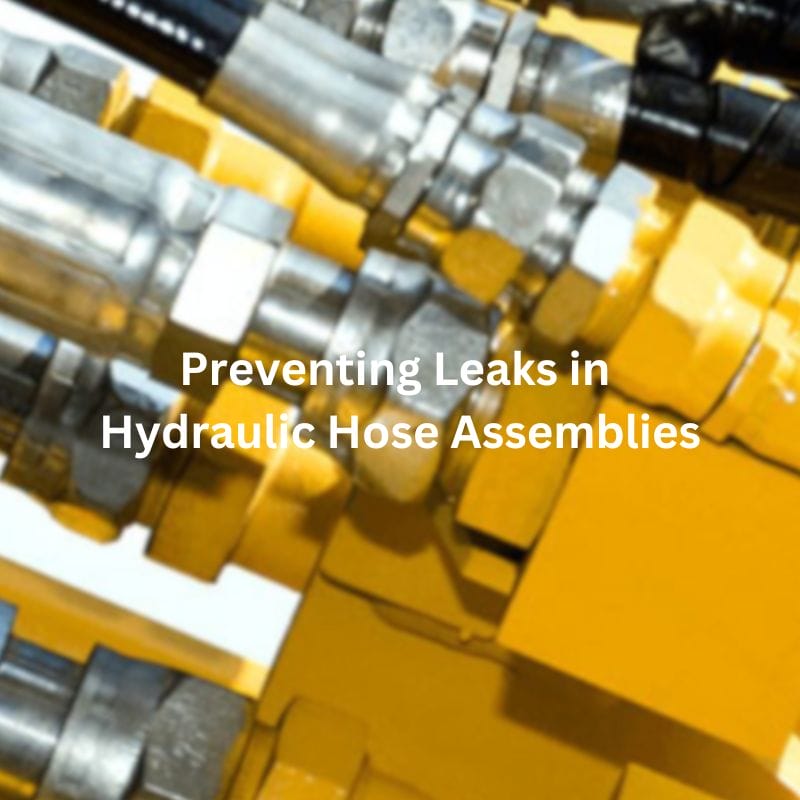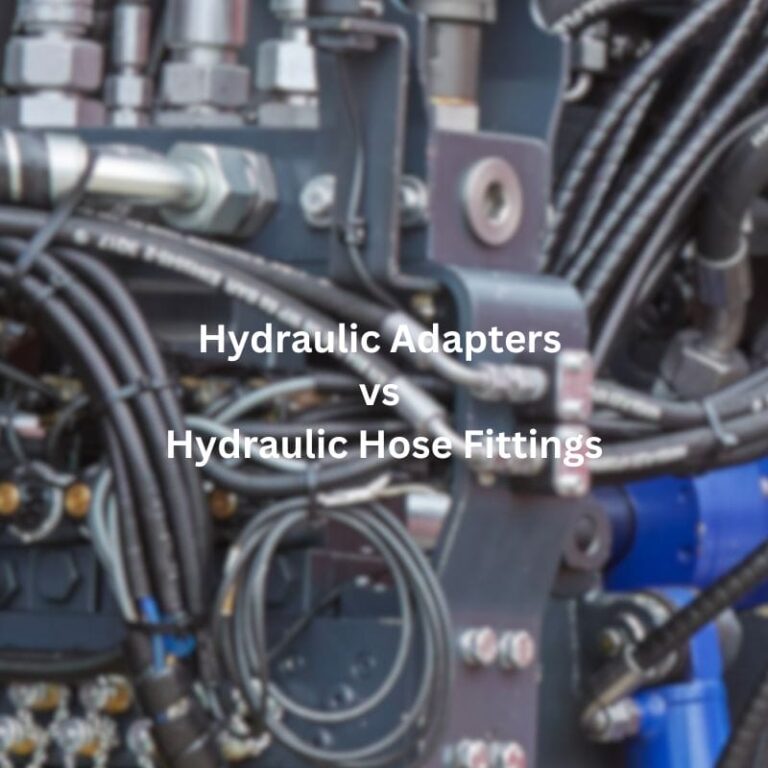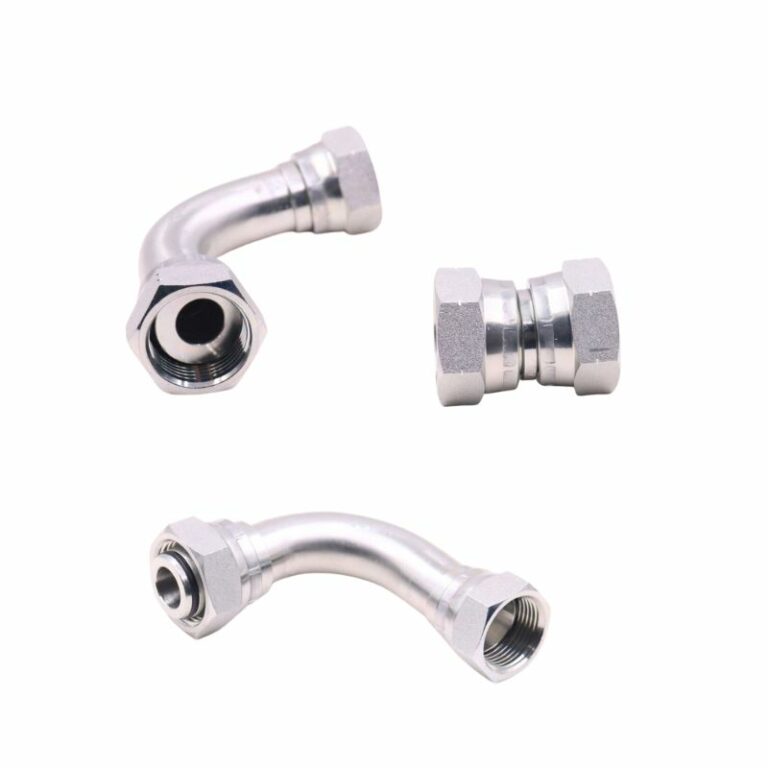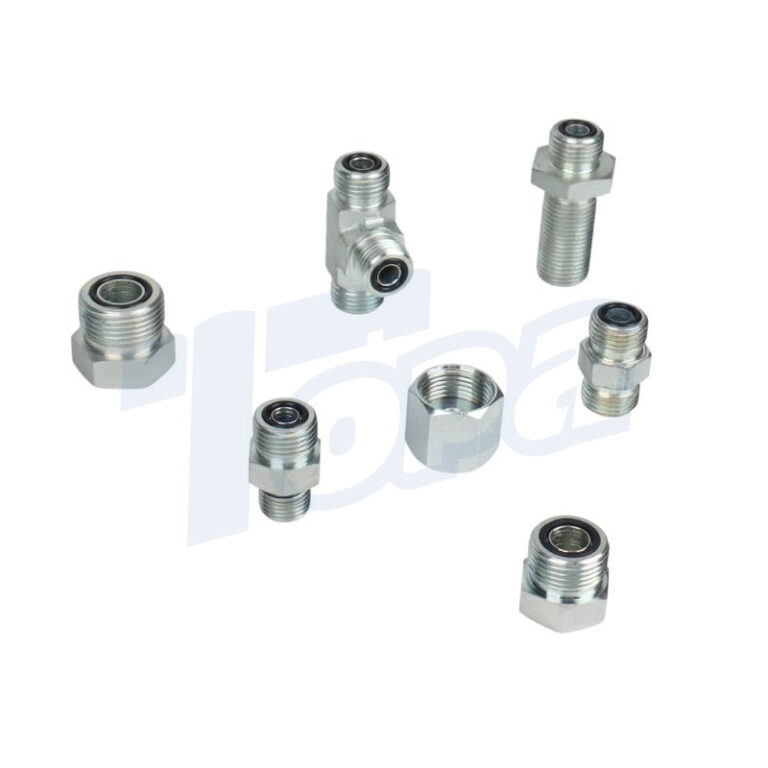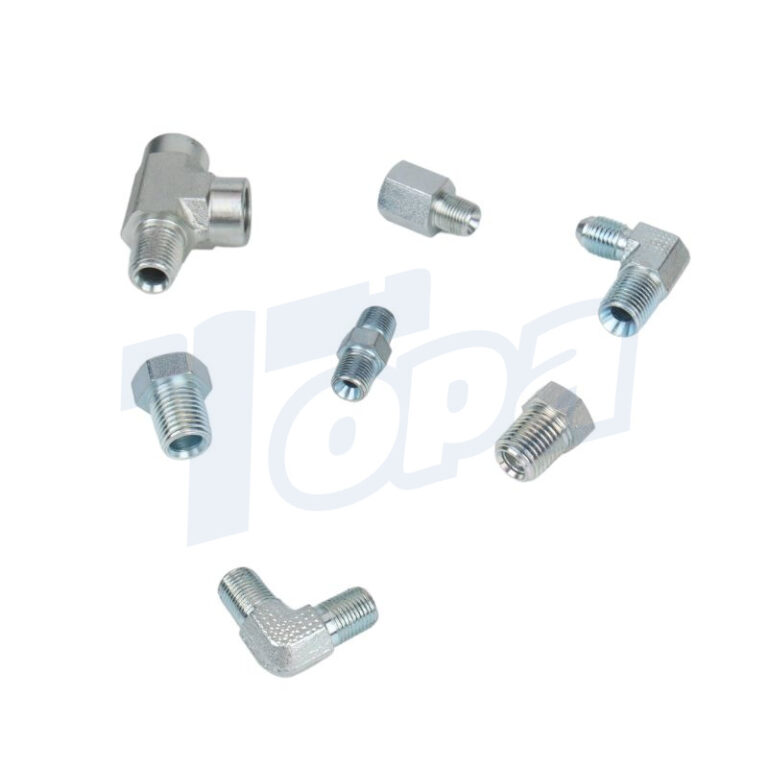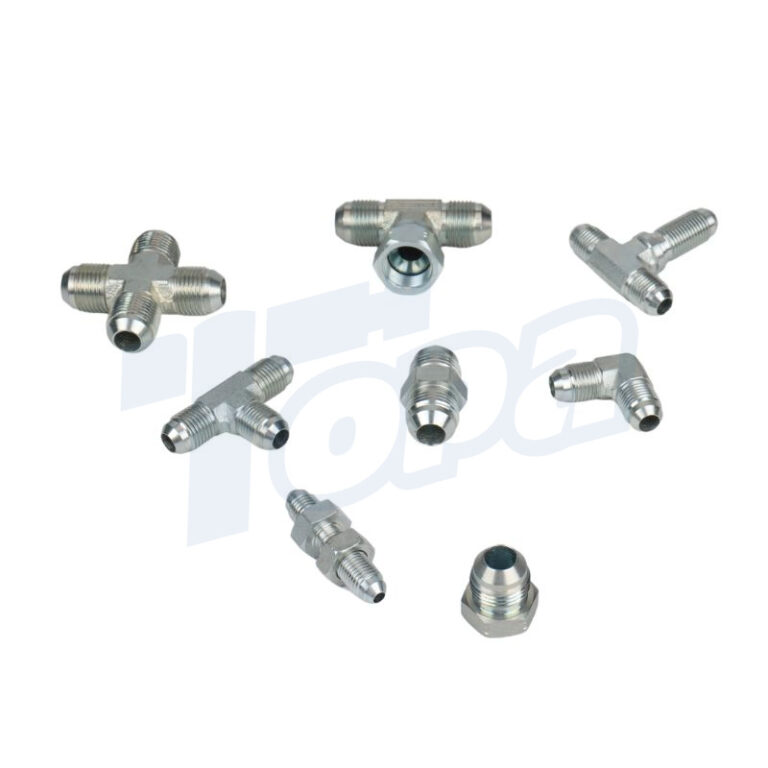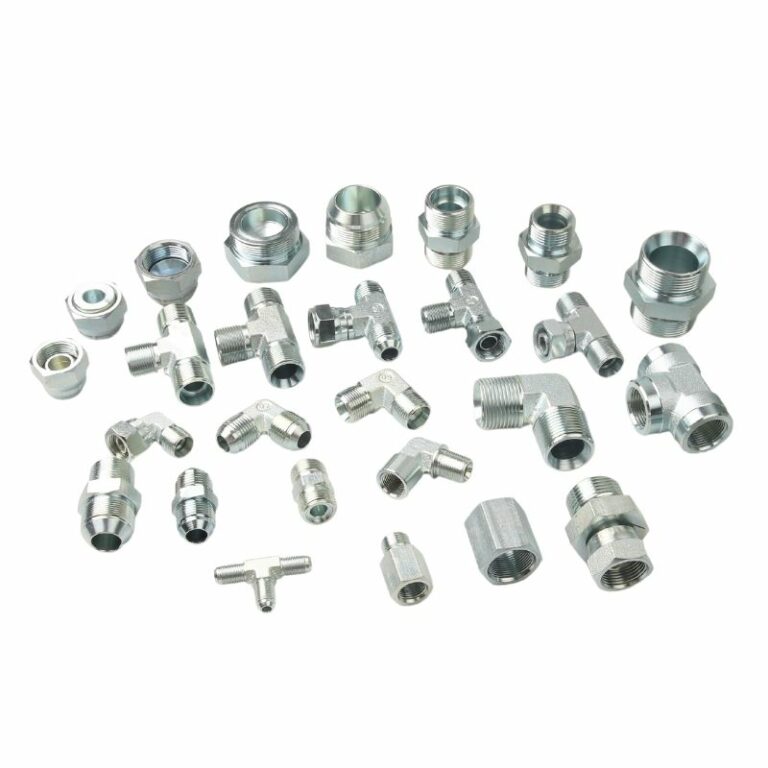How to Crimp Hose Ferrules: Step-by-step Guide
Introduction
Hose ferrules are critical components in hydraulic systems, serving as the connection point between hoses and fittings. Proper crimping of hose ferrules is vital to creating a secure connection that can withstand the demands of these applications. Crimping not only tightens the ferrule around the hose but also ensures that the connection is leak-proof and durable. The purpose of this post is to guide you through the process of crimping hose ferrules step by step.
Understanding Hose Ferrules
What are Hose Ferrules?
Hose ferrules are cylindrical components that play a crucial role in securing hoses to fittings, ensuring a strong and leak-proof connection. They are typically placed over the hose end and crimped to create a tight seal, preventing the hose from slipping off the fitting under pressure. Ferrules are essential in maintaining the integrity of the hydraulic system, as they help distribute the stress evenly across the connection point. There are various types of hose ferrules designed to suit different applications and environments. Standard ferrules are commonly used for general-purpose applications, while stainless steel ferrules offer enhanced corrosion resistance, making them ideal for harsh or corrosive environments. Brass ferrules are also popular due to their excellent durability and resistance to rust, making them suitable for many industrial and automotive applications.

Materials and Compatibility
Hose ferrules are made from a range of materials, each offering distinct properties that make them suitable for specific applications. Common materials include stainless steel, brass, aluminum, and sometimes even nylon. Stainless steel ferrules are known for their high corrosion resistance and are ideal for use in marine environments or with corrosive fluids. Brass ferrules, on the other hand, provide good durability and are resistant to wear and tear, making them a popular choice in various industrial settings. When selecting a ferrule, it’s important to consider the compatibility with the hose material. For example, rubber hoses are often paired with stainless steel or brass ferrules due to their flexibility and durability. PVC hoses, which are commonly used in low-pressure applications, can work well with aluminum ferrules. PTFE hoses, known for their chemical resistance, are best matched with stainless steel ferrules to ensure longevity and reliability in demanding environments.
Selecting the Right Ferrule
Choosing the right hose ferrule involves careful consideration of several factors to ensure a secure and durable connection. The size of the ferrule must match the hose’s outer diameter to achieve a proper crimp. Using a ferrule that is too small or too large can result in an inadequate seal, leading to potential leaks or hose failure. Material selection is equally important, as the ferrule needs to be compatible with both the hose material and the fluids being transported. For instance, when working with corrosive chemicals, stainless steel ferrules are often the best choice due to their superior resistance to corrosion. Additionally, the application environment should be considered—ferrules used in high-pressure hydraulic systems need to be made from materials that can withstand the operational stresses. Lastly, it’s important to ensure that the ferrule is compatible with the fitting type being used. Properly matching the ferrule with the hose and fitting will result in a connection that is not only secure but also durable and reliable, even under extreme conditions.
Tools and Equipment Needed for Crimping
Crimping Machines
Crimping machines are essential tools in the process of securing hose ferrules, providing the necessary force to compress the ferrule around the hose and fitting. There are several types of crimping machines available, each suited for different applications and levels of use.
Manual Crimping Machines: These are typically the most affordable and portable option, ideal for low-volume or fieldwork. Manual crimping machines require physical effort to operate, making them suitable for smaller hoses and ferrules. They are perfect for on-site repairs or applications where power sources are limited.
Hydraulic Crimping Machines: These machines use hydraulic power to deliver high crimping force, making them suitable for a wide range of hoses, including those with higher pressure ratings. Hydraulic crimping machines are versatile and can be used in both workshop and field environments. They are preferred for medium to high-volume production due to their efficiency and ease of use.
Selecting the right crimping machine for your application involves considering factors such as the type and size of the hoses being crimped, the volume of crimping required, and the environment in which the machine will be used. For occasional use or small-scale operations, a manual or hydraulic machine may suffice.
Crimping Dies
Crimping dies are interchangeable components used in crimping machines to apply the correct amount of pressure to the ferrule during the crimping process. The die set is designed to match the specific size and shape of the hose and ferrule being crimped, ensuring a secure and reliable connection.
Understanding crimping dies and their role in the crimping process is crucial for achieving a proper crimp. The die must fit the ferrule and hose precisely; otherwise, the crimp may be too loose, leading to leaks, or too tight, which could damage the hose or ferrule. Crimping dies are usually made of hardened steel to withstand the high pressures involved in the crimping process.
Choosing the correct die size for different ferrules requires knowledge of the hose’s outer diameter and the ferrule’s specifications. Dies are typically labeled with size indicators corresponding to the hose and ferrule dimensions they are designed for. Using the wrong die size can result in an improper crimp, so it’s important to carefully match the die to the specific hose and ferrule combination. Some crimping machines come with a set of dies, while others may require purchasing additional dies separately for different applications.

Additional Tools
In addition to crimping machines and dies, several other tools and equipment are necessary to ensure a smooth and effective crimping process.
Measuring Tools: Accurate measurements are vital in the crimping process to ensure that the hose, ferrule, and fitting are properly matched. Calipers are commonly used to measure the outer diameter of hoses, while tape measures can be used for general length measurements. These tools help ensure that the correct ferrule size is selected and that the hose is cut to the appropriate length.
Safety Equipment: Crimping involves high-pressure and heavy machinery, making safety a top priority. Gloves protect hands from sharp edges on the ferrules and hoses, while goggles shield eyes from potential debris or fluid splashes during the crimping process. Wearing the appropriate safety equipment reduces the risk of injury and ensures a safer working environment.
Lubricants and Cleaning Supplies: Lubricants can be applied to the hose and ferrule to ease the crimping process, especially when working with tight fittings. They help reduce friction, ensuring that the ferrule slides smoothly over the hose during crimping. Cleaning supplies such as wipes or cloths are essential for preparing the hose and ferrule surfaces, removing any dirt, grease, or debris that could interfere with the crimping process. A clean surface ensures a better seal and a more secure connection.
Step-by-Step Guide to Crimping Hose Ferrules
Preparation
Measuring and Cutting the Hose
Proper Measurement Techniques for Accurate Hose Cutting: Start by measuring the hose carefully to ensure that it is cut to the correct length. Use a tape measure or caliper to determine the required length, making sure to account for any fittings that will be attached. Accurate measurements are crucial to avoid any issues during the assembly process, such as a hose being too short or too long for the intended application.
Importance of a Clean, Straight Cut: Once the measurement is taken, use a hose-cutting tool or a sharp blade to make a clean, straight cut. A straight cut ensures that the hose end fits securely into the ferrule, preventing gaps that could lead to leaks. A jagged or uneven cut could compromise the seal between the hose and ferrule, leading to potential failure of the connection. It’s important to avoid using dull tools, as they can crush or fray the hose, making it difficult to achieve a proper crimp.
Selecting the Appropriate Ferrule and Fitting
How to Match Ferrules and Fittings to the Hose: After cutting the hose, the next step is to select the appropriate ferrule and fitting. The ferrule must match the hose’s outer diameter and be compatible with the fitting type. It’s essential to verify that the fitting’s size and thread type aligns with the hose specifications. Mismatched components can lead to improper crimping, resulting in leaks or system failure. Take the time to check the manufacturer’s guidelines or use a sizing chart to ensure the correct selection.
Preparing the Hose End
Techniques for Cleaning and Prepping the Hose End Before Crimping: Before attaching the ferrule, clean the hose end to remove any debris, dust, or manufacturing residues that could affect the crimping process. A clean surface ensures better adhesion and a tighter seal. Use a cloth or wipe to clean the inside and outside of the hose end thoroughly. In some cases, applying a light lubricant can help the ferrule slide more easily onto the hose, but make sure it is compatible with the materials involved and does not interfere with the crimping process.

Setting Up the Crimping Machine
Installing the Correct Die Set
How to Install and Secure the Die Set in the Machine: Choose the die set that matches the size of the ferrule and hose. Open the crimping machine and insert the appropriate dies into the machine’s crimping head. Ensure that the dies are securely locked in place to prevent any movement during the crimping process. If the dies are not properly aligned or secured, the crimp may be uneven, leading to an unreliable connection. Double-check the die size against the hose and ferrule specifications before proceeding.
Adjusting the Crimping Machine
Calibrating the Machine for Optimal Crimping Pressure: Adjust the crimping machine to apply the correct amount of pressure for the specific hose and ferrule being used. Too much pressure can damage the hose or fitting, while too little pressure may result in an inadequate seal. Most crimping machines have a pressure adjustment dial or setting that can be calibrated according to the manufacturer’s guidelines. It’s important to follow these guidelines closely to achieve the best results. Perform a test crimp if necessary to ensure that the machine is correctly calibrated.
Securing the Hose and Ferrule
Positioning the Hose and Ferrule in the Crimping Machine: Insert the hose with the ferrule into the crimping machine’s jaws, making sure that the ferrule is positioned correctly within the dies. The ferrule should be centered in the crimping area to ensure even compression. Hold the hose steady as you position it, and make sure there are no kinks or twists in the hose that could affect the crimping process. Proper alignment is crucial to achieving a secure and leak-free connection.
The Crimping Process
Initiating the Crimp
Step-by-Step Instructions for Operating the Crimping Machine: Once the hose and ferrule are properly positioned, begin the crimping process by activating the machine. For manual machines, apply consistent pressure on the handle until the crimp is complete. For hydraulic or electric machines, follow the manufacturer’s instructions to start the crimping cycle. The machine will compress the ferrule around the hose, creating a tight seal. Monitor the process closely to ensure that the crimp is even and that the ferrule is compressed uniformly around the hose.
Inspecting the Crimp
How to Inspect the Crimped Ferrule for Proper Compression and Fit: After the crimping process is complete, carefully remove the hose from the machine and inspect the ferrule. Check for any signs of uneven crimping, such as gaps between the ferrule and hose, or areas where the ferrule appears over-compressed. The ferrule should fit snugly around the hose without any visible deformities. If the crimp appears uneven or if there are any visible defects, it may be necessary to redo the crimp or make adjustments to the machine settings.
Adjusting if Necessary
What to Do if the Crimp is Too Loose or Too Tight: If the crimp is not satisfactory, determine whether the issue is due to incorrect die size, improper machine calibration, or misalignment during the crimping process. If the crimp is too loose, it may indicate that the dies were too large or that insufficient pressure was applied. If the crimp is too tight, it could be due to excessive pressure or an incorrect die size. Make the necessary adjustments and repeat the crimping process until the desired result is achieved.
Post-Crimping Procedures
Cleaning the Assembly
How to Clean the Hose and Ferrule Assembly After Crimping: Once the crimping process is complete and the crimp has been inspected, clean the hose assembly to remove any debris or residue left from the crimping process. Use a clean cloth or wipe to remove any excess lubricant, metal shavings, or dirt from the hose and ferrule. A clean assembly is essential for ensuring a secure connection and preventing contamination in the hydraulic system.
Final Inspection
Checking the Assembly for Any Defects or Issues: Perform a thorough inspection of the entire hose assembly, including the crimped ferrule, the hose itself, and the fitting connection. Look for any signs of damage, such as cracks in the ferrule, frayed hose material, or misaligned fittings. Ensure that the ferrule is properly seated and that there are no gaps or loose areas that could lead to leaks. If any defects are found, they should be addressed immediately to prevent future issues.
Testing the Assembly
Pressure Testing the Hose Assembly to Ensure it Meets Safety Standards: To verify the integrity of the crimped hose assembly, perform a pressure test to ensure that it can withstand the operating pressures of the hydraulic system. Connect the assembly to a pressure testing rig and gradually increase the pressure to the maximum operating level specified for the hose. Monitor the assembly for any signs of leaks, bulging, or other issues. If the assembly passes the pressure test without any problems, it is ready for use. If any issues are detected, further inspection and possible re-crimping may be necessary.
Conclusion
Quality crimping is not just about achieving a tight fit; it’s about ensuring the long-term reliability and safety of the entire hydraulic system. A well-crimped ferrule can prevent leaks, system failures, and costly downtime, making it a critical aspect of hydraulic maintenance and repair. As you continue to develop your crimping skills, don’t hesitate to share your experiences, ask questions, and seek advice from experts in the field.
FAQ
A hose ferrule is a small metal sleeve that is crimped around the end of a hose to secure it to a fitting, ensuring a leak-proof connection in hydraulic systems.
Proper crimping ensures a secure connection between the hose and fitting, preventing leaks and system failures, and maintaining the integrity of the hydraulic system.
Essential tools include a crimping machine (manual, hydraulic, or electric), crimping dies, measuring tools like calipers, and safety equipment such as gloves and goggles.
Select a ferrule based on the hose’s outer diameter, material compatibility, and the fitting type. Ensure the ferrule matches the hose and fitting for a secure crimp.
While it is possible to crimp small ferrules manually, using a crimping machine is recommended for consistent, secure, and reliable results, especially in high-pressure applications.
After crimping, inspect the ferrule for even compression without gaps or deformities. Conduct a pressure test to ensure the connection is leak-proof and meets safety standards.


